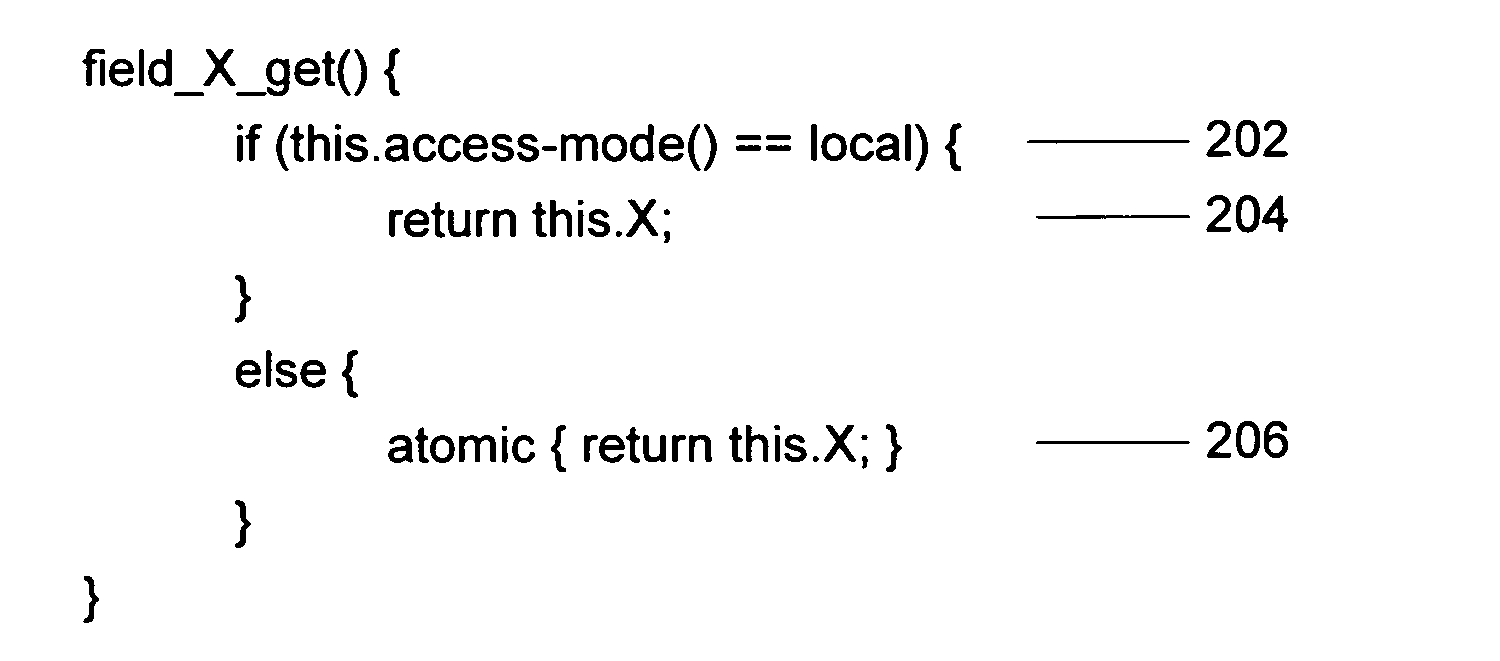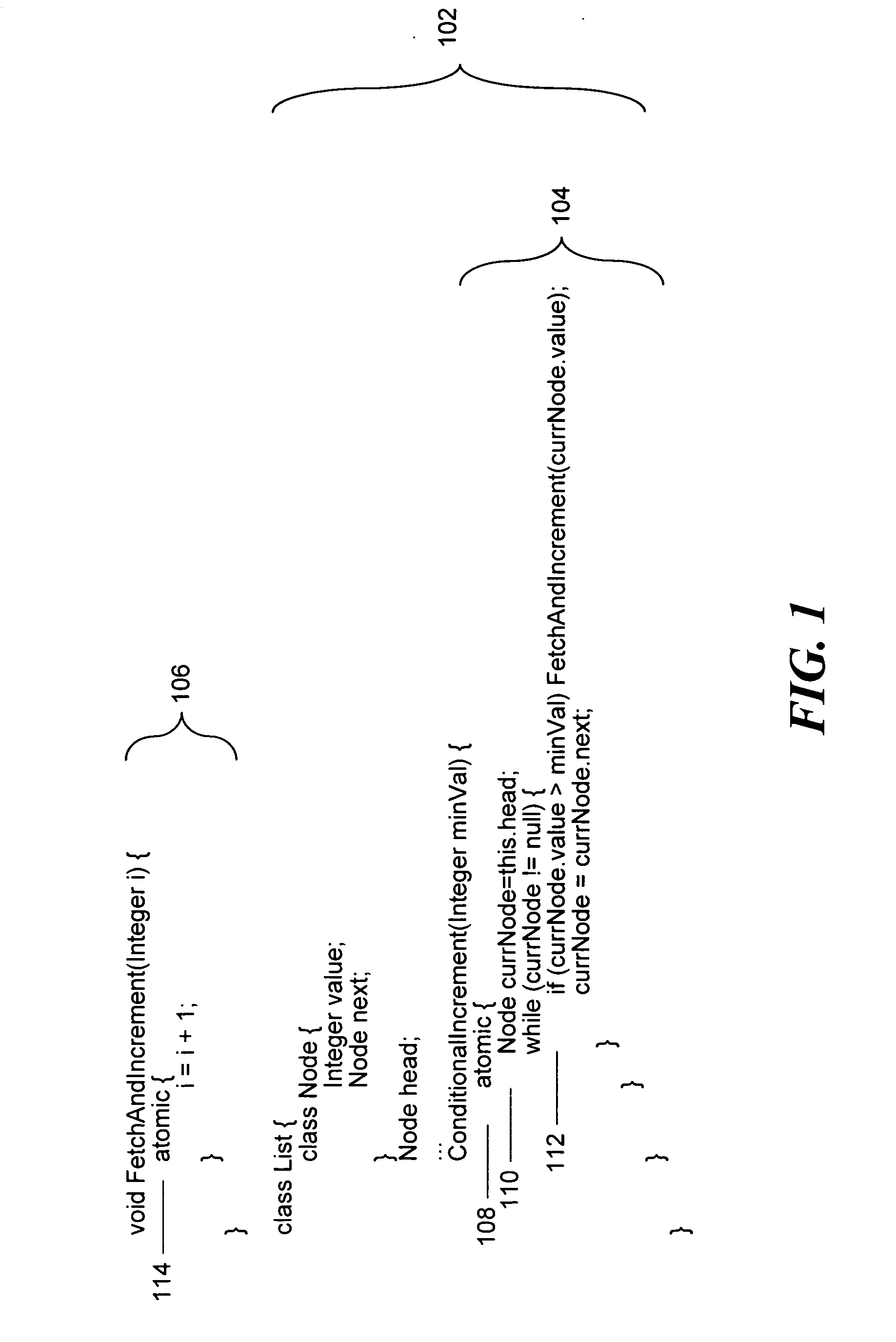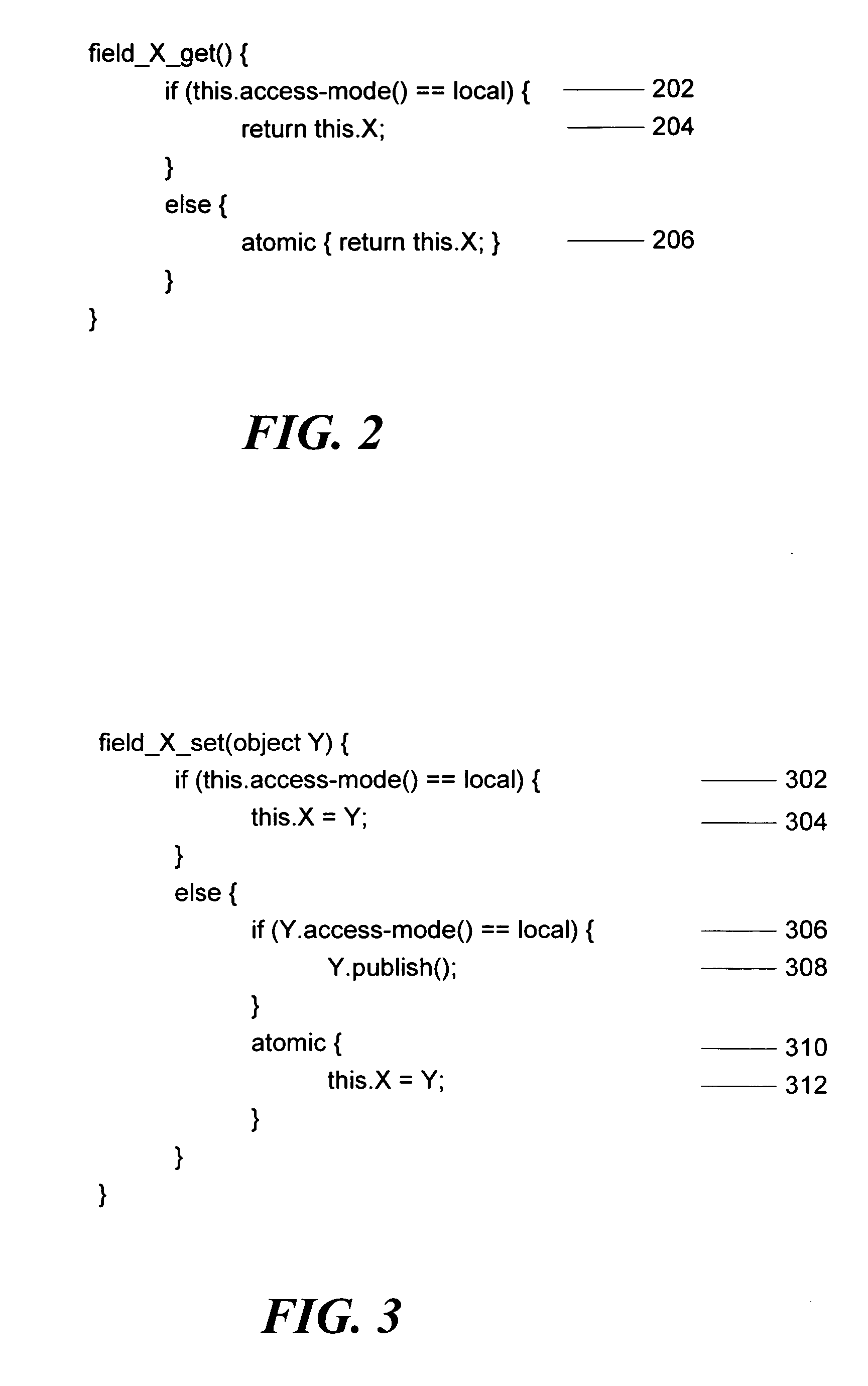Method and apparatus for improving transactional memory interactions by tracking object visibility
- Summary
- Abstract
- Description
- Claims
- Application Information
AI Technical Summary
Benefits of technology
Problems solved by technology
Method used
Image
Examples
Embodiment Construction
[0016] In order to operate with transactional memory, embodiments of the invention require that the transactional memory implementation support several basic operations. The first operation is a “begin” operation which starts a new transaction. A second set of operations are “read” and “write” operations that are used inside the scope of the transactions to access the memory transactionally. An “abort” operation is used to end a transaction by discarding all modifications performed during the transaction. A “commit” operation attempts to end a transaction and make all modifications performed during the transaction visible so it appears as if the modifications were performed atomically. The commit operation may fail, in which case the result is the same as if an abort operation has been performed. If the transactional memory implementation uses the aforementioned hybrid approach, than there might be two sets of such operations, one for the hardware implementation and one for the soft...
PUM
 Login to View More
Login to View More Abstract
Description
Claims
Application Information
 Login to View More
Login to View More - R&D
- Intellectual Property
- Life Sciences
- Materials
- Tech Scout
- Unparalleled Data Quality
- Higher Quality Content
- 60% Fewer Hallucinations
Browse by: Latest US Patents, China's latest patents, Technical Efficacy Thesaurus, Application Domain, Technology Topic, Popular Technical Reports.
© 2025 PatSnap. All rights reserved.Legal|Privacy policy|Modern Slavery Act Transparency Statement|Sitemap|About US| Contact US: help@patsnap.com



